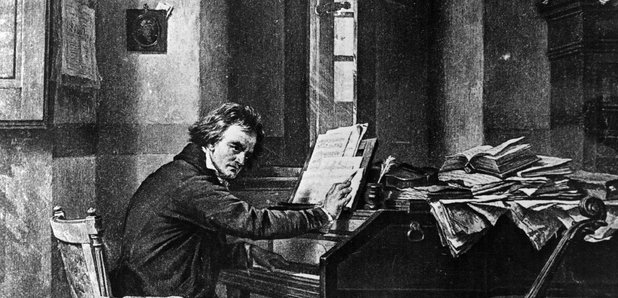|
||
|
The pastoral symphony is unique among Beethoven's works in that all the movements are given descriptive titles. They are: pleasant thoughts that wake on arriving in the country; scene by the stream; merry gathering of the country folk; thunder storm and thanksgiving to the deity. Beethoven decsribed it as "more an expression of feeling than painting" and the feelings that are expressed suggest happiness, excitement and awe. It is well known that Beethoven loved the country. In 1810 he wrote to Therese Malfatti: "How delighted I will be to ramble for awhile through the bushes, woods, under trees, through grass, and around rocks. No one can love the country as much as I do. For surely woods, trees, and rocks produce the echo that man desires to hear." Country scenes were an inspiration to him, but were never so clearly expressed as in the pastoral symphony. Many descriptions of nature in music pre-date the pastoral symphony including works by Purcell, Vivaldi and Haydn. A particularly interesting one is a now forgotten symphony by J. H. Knecht, called "Le portrait musical de la nature", which includes a depiction of the peaceful countryside, a thunder storm breaking and subsiding, and a musical evocation of nature giving thanks to the creator. The programme is almost identical to the pastoral symphony, and given that it was written when Beethoven was fourteen years old, it seems very likely that not only did he know it but also he used it as a model. In form the pastoral symphony follows a fairly conventional outline. One unusual feature is the introduction of a fifth movement (the thunder storm) but otherwise it is cast the mould of Beethoven's earlier symphonies and those of Haydn and Mozart. It is none the less a stunningly original work, particularly in its descriptive use of harmony and orchestration. The first movement, which is in sonata form conveys a building sense of excitement with many passages based on melodic fragments that repeat over and over again - possibly describing the wheels of the carriage taking the composer into the country or perhaps describing his heart beating with excitement. The second movement is a gentle andante in which the rippling of a stream is heard in the second violins surrounded by the sounds of birds and by gentle lyrical melodies describing the composer's thoughts. It ends with an evocation of three bird calls, the nightingale (which does sing during the day) on the flute, the quail on the oboe overlapping with the cuckoo on the clarinet. What is so remarkable about this movement is that the sounds of the forest are so accurately depicted on the orchestra at a time when Beethoven had been deaf for over eight years. The third movement is a schzero and trio in which both sections have the character of country dances. The scherzo is light and delicate and the trio a rowdy stamping dance. The movement is unusual in that the trio appears a second time, and in the last appearance of the scherzo Beethoven directs the movement towards the impending storm by quickening the pace and making the horn calls increasingly anxious. The fourth movement joins the third without a break and begins with a lull in which the first drops of rain are portrayed by the violins. The breaking storm is a tour de force of orchestral painting with intermittent thunder and lightning driving rain and the shrill piccolo describing the whistling of the wind. The fury soon subsides and we hear the storm disappearing in the distance. During a moment of calm we hear the bird calls again and the symphony progresses seamlesly into the final movement which is in rondo sonata form. The movement starts quietly then gradually builds to an jouous climax. A short calm section, perhaps suggesting a fervent prayer brings the work to a close. The symphony had its premiere in December 1808 in Vienna. As was often the case with Beethoven's work the contemporary critics rudely dismissed it. George Grove quotes one as saying: "Symphony is not a proper name for such a work which should be called the caprices of a composer". However public opinion did not share this view and the pastoral soon became one of the most popular and frequently performed of all Beethoven's works. The Pastoral Symophony was performed by the Portobello orchestra on the 8th December 2012, conducted by David Ward. back |

